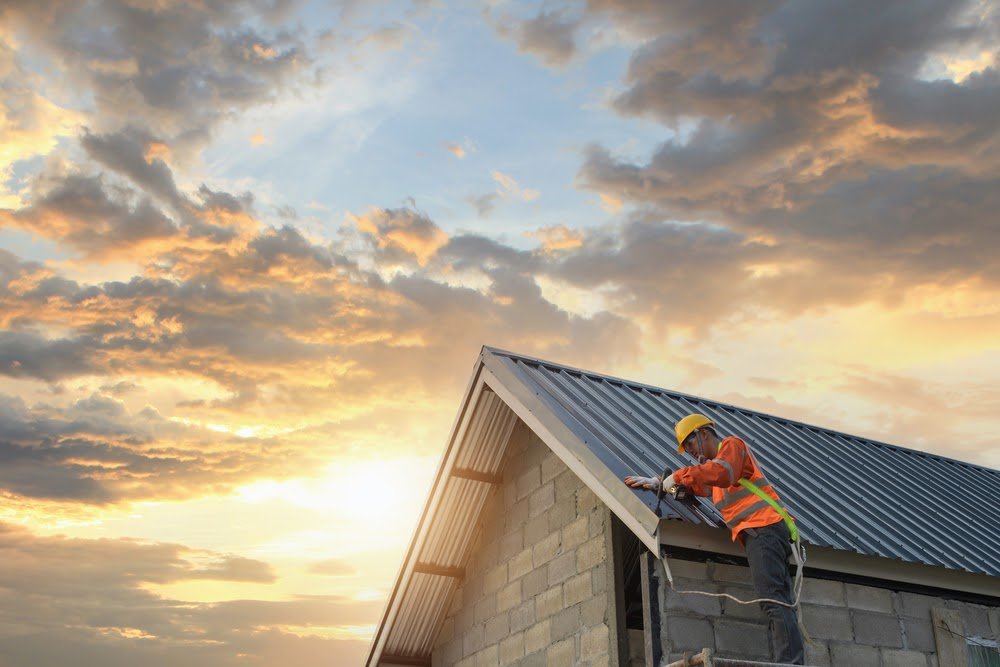Does a Home Warranty Cover Roof Leaks?
If you find yourself staring at a damaged roof, asking, “Do home warranties cover roofs?” you can rest easy. The answer is: Yes if you add roof coverage to your home warranty plan. A home warranty picks up where home insurance leaves off – that is, it provides coverage for flaws in the materials and workmanship involved in constructing your home rather than coverage for damage caused by a catastrophe.
Read on to learn the answer to this and other warranty questions, including how to maintain your roof to avoid future problems.
Are roof leaks covered by a home warranty?
Yes, roof leaks can be covered by a home warranty, but it’s important to understand that this coverage is not automatically included in most standard home warranty plans. Roof coverage is often offered as an add-on or optional feature that homeowners can choose to include in their warranty package for an additional cost. Let’s delve deeper into the concept of roof coverage being an add-on and what it entails:
Home warranty roof coverage as an add-on
Not automatically included: When you purchase a standard home warranty, it typically focuses on providing coverage for the major systems and appliances inside your home, such as heating and cooling systems, plumbing, electrical systems, and kitchen appliances. Roof coverage, however, is not automatically part of this standard package.
Selecting roof coverage: Homeowners who are concerned about potential roof issues, such as leaks, shingle damage, or structural problems, can choose to add roof coverage to their home warranty plan. This allows them to extend the protection of their warranty to include their roof.
Additional cost: Adding roof coverage to your home warranty usually comes at an extra cost. The cost may vary depending on factors such as the warranty provider, the age and condition of your roof, and the level of coverage you select.
Terms and conditions: It’s essential to thoroughly review the terms and conditions of the roof coverage add-on. Different providers may have varying coverage limits, deductibles, and exclusions. Some plans may cover repairs for specific types of roof damage, while others may provide full replacement coverage under certain circumstances.
Preventive maintenance: Some home warranty providers may require homeowners to demonstrate that they have performed regular maintenance on their roof to be eligible for roof coverage. This can include periodic inspections and repairs to address any pre-existing issues.
Claims process: In the event of a roof leak or other roof-related problem, homeowners with roof coverage can typically file a claim with their warranty provider. The provider will then dispatch a qualified contractor to assess and address the issue.
While home warranties can offer protection against roof leaks and related issues, this coverage is typically offered as an add-on to the standard warranty plan. Homeowners should carefully assess their specific needs, budget, and the condition of their roof when deciding whether to include roof coverage in their home warranty. Understanding the terms, conditions, and coverage details associated with the roof add-on is crucial for making an informed decision and ensuring that your home and its important systems are adequately protected.
Tips to maintain your roof
If your home warranty covers roof repair, that’s still only one-half of the equation that involves keeping your home in good working order. The other part of that equation relates to how you use and maintain the systems and appliances in your home. As indicated above, the improper use of a system or appliance means that any resulting damage won’t be covered. The term “improper use,” especially for components like the roof, can also include not maintaining it properly. Fortunately, maintaining your roof is easy and doesn’t require a huge investment of time.
Here are seven steps to keep your roof in good condition:
Clean your gutters. Keeping your gutters free of debris means rainwater can flow down and away from your home, preventing water from seeping in.
Trim your trees. Trees next to your home can look lovely, but it poses a potential risk to your roof. Branches knocked down during a storm can hit your roof and cause holes. Avoid the risk of fallen branches damaging your home by either keeping the trees away from the home or trimming any branches that overhang the roof.
Remove snow. After a substantial snowfall, you should remove the build-up of snow from your roof since the weight of the snow can cause the roof to collapse if it gets heavy enough.
Inspect the shingles. By regularly checking for cracked or missing shingles (and replacing them as needed), you can prevent a problem before it happens.
Remove moss, mold, or algae. The wind can quickly spread these three from one roof to another. Algae won’t damage asphalt shingles, but moss and mold can indicate a leak in the roof. Also, moss can cause shingles to curl, leading to them falling loose and falling off. Mold will cause the structure of your roof to rot. You can get rid of these three by spraying the roof with chlorine bleach and water, then allowing it to sit for 30 minutes before power washing it off. Make sure the run-off goes into the gutters, so chlorine bleach doesn’t cause damage to your landscaping.
Inspect your attic for leaks. If you have an attic, inspect it regularly for leaks. If there’s a leak in the roof, and you don’t make regular inspections, you may end up with a problem that goes undetected until it becomes an expensive repair job.
Have your roof inspected regularly. Even though you could perform basic roof maintenance and superficial inspections yourself, a professional roofer will identify problem areas you may not notice. Having your roof inspected bi-annually (or as needed after a big storm) will ensure your roof lasts a long time.
While a home warranty saves you a lot of money in repairs, it won’t cover a roof that sustains damage because it wasn’t maintained properly. Spend a little time looking after your roof to prevent spending a ton of money to repair it later.
As a homeowner, you know that unforeseen expenses have a way of popping up when you least expect them, so it pays to have a financial safety net in place. Home insurance will offer financial coverage for your home and its contents in the event of a disaster. It’s a fact that the systems and appliances in your home – and necessary add-ons like your roof – will need repairs at some point. To save yourself a bundle of money making these repairs, it pays to have a good home warranty plan in effect. Contact your warranty provider to arrange a home warranty. Roof repairs don’t have to be as expensive as without coverage.

